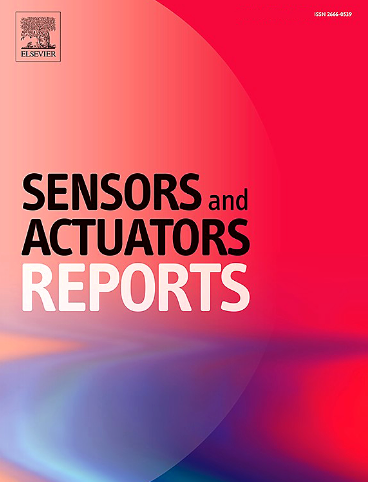Nucleic acid-free aptamer-CRISPR/Cas14 biosensor for prosthetic joint infection rapid detection
IF 7.6
Q1 BIOTECHNOLOGY & APPLIED MICROBIOLOGY
引用次数: 0
Abstract
Rapid detection of live pathogens in prosthetic joint infections (PJI) remains a critical challenge in clinical practice. This study introduces a novel dual-aptamer CRISPR/Cas14 biosensor for rapid, equipment-minimized detection of live bacteria in clinical samples. Unlike existing aptamer-CRISPR platforms, our method integrates two aptamers: one biotinylated for magnetic bead-based bacterial enrichment, and the other to activate the CRISPR/Cas14 system. Cas14, chosen for its PAM-free ssDNA recognition and direct detection capability, triggers trans-cleavage of fluorophore-quencher-labeled ssDNA, generating fluorescence signals without nucleic acid extraction or amplification. This approach eliminates the need for centrifugation, significantly reducing equipment requirements and making it ideal for point-of-care testing. The method demonstrated high specificity, with detection limits of 10² CFU/mL for aptamer enrichment and 10 CFU/mL for CRISPR/Cas14 detection at room temperature (37 °C) . Clinical validation showed an 83.3 % positive concordance rate and 100 % negative concordance, with results obtainable within 15 min. By bypassing nucleic acid extraction and amplification, this dual-aptamer CRISPR/Cas14 biosensor offers a simple, rapid, and reliable solution for diagnosing PJI, with significant potential for clinical application.

无核酸适体crispr /Cas14生物传感器用于假体关节感染的快速检测
快速检测假体关节感染(PJI)的活病原体仍然是临床实践中的一个关键挑战。本研究介绍了一种新型双适体CRISPR/Cas14生物传感器,用于快速、设备最小化地检测临床样品中的活菌。与现有的适体-CRISPR平台不同,我们的方法集成了两个适体:一个生物素化用于基于磁珠的细菌富集,另一个用于激活CRISPR/Cas14系统。Cas14因其不含pam的ssDNA识别和直接检测能力而被选中,触发荧光团猝灭剂标记的ssDNA的反式裂解,产生荧光信号,无需核酸提取或扩增。这种方法消除了对离心的需要,大大降低了设备要求,使其成为即时检测的理想选择。该方法具有较高的特异性,在室温(37℃)条件下,适体富集检测限为10²CFU/mL, CRISPR/Cas14检测限为10 CFU/mL。临床验证,阳性符合率为83.3%,阴性符合率为100%,15 min内可获得结果。该双适体CRISPR/Cas14生物传感器无需核酸提取和扩增,为PJI诊断提供了一种简单、快速、可靠的解决方案,具有重要的临床应用潜力。
本文章由计算机程序翻译,如有差异,请以英文原文为准。
求助全文
约1分钟内获得全文
求助全文
来源期刊

Sensors and Actuators Reports
Multiple-
CiteScore
9.60
自引率
0.00%
发文量
60
审稿时长
49 days
期刊介绍:
Sensors and Actuators Reports is a peer-reviewed open access journal launched out from the Sensors and Actuators journal family. Sensors and Actuators Reports is dedicated to publishing new and original works in the field of all type of sensors and actuators, including bio-, chemical-, physical-, and nano- sensors and actuators, which demonstrates significant progress beyond the current state of the art. The journal regularly publishes original research papers, reviews, and short communications.
For research papers and short communications, the journal aims to publish the new and original work supported by experimental results and as such purely theoretical works are not accepted.
 求助内容:
求助内容: 应助结果提醒方式:
应助结果提醒方式:


